15 de July de 2020
Reactive Strength Index and chart – RSI
An Introduction to Reactive Strength Index
The Reactive Strength Index (RSI) was originally developed as part of the Strength Qualities Assessment Test (SQAT) used at the Australian Institute of Sport to evaluate and classify different athletes (mainly sprinters and jumpers) based on their strength qualities 1.
The aforementioned testing battery included different strength-oriented assessments including:
- Squat Jump (SJ): A maximum jump for height with a 9kg bar resting on the shoulders from a static squat position with a 90″ knee angle. This is a basic measure of leg explosiveness under concentric contraction conditions1
- Countermovement jump (CMJ): This is performed under the same conditions as The SJ but a countermovement (eccentric contraction) is produced immediately prior to the extension of the legs.
- Reactive strength (slow stretch-shortening Cycle/low stretch loads): This is calculated as CMJ-SJ and is considered to be a measure of the ability to utilize the muscle pre-stretching during the CMJ1.
- Reactive strength (fast SSC/high stretch loads): This is measured from a depth or drop jump (DJ), utilizing a variety of drop heights (30, 45, 60cm) to impose various stretch loads on the leg extensors. A contact mat /computer system is used to record jump height and contact time1.
- Maximum Strength: This is determined by an isometric squat from a 120- knee angle using a force plate1.
The whole rationale behind this assessment was to generate an individual profile based on those metrics to assists the coach in identifying specific strengths and weaknesses and individualizing the training programs and also to monitor the training process and check if planned goals were achieved or not and improved the program as needed.
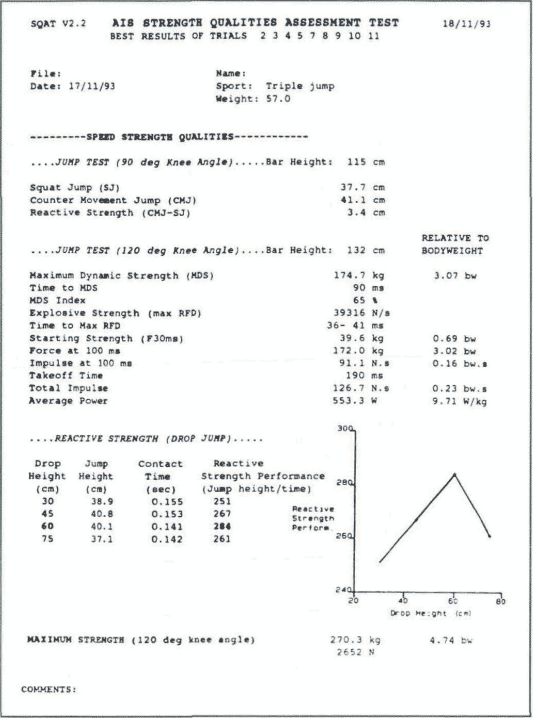
Figure1: Example of results from the SQAT taken from the original publication1
But what is reactive strength index actually showing? In simple words, we are measuring how many cms of height we can achieve per millisecond of time touching the floor.
But what is RSI actually showing? Well, the index is actually a ratio between two variables which in mathematics, indicates how many times one number contains another. We use ratios to make comparisons between two things, in this case, we are comparing the jump height (expressed in Centimeters) with the contact time (expressed in seconds), which is basically the amount of time an athlete is touching the floor in between jumps because RSI is usually calculated from Drop Jumps.
However, with the recent advance in sports performance technology such as linear position transducers, portable force plates, etc., we can calculate RSI for non-plyometric jumps such as CMJ, using the time to take-off instead of Contact Time which includes the time needed for performing the eccentric and concentric phases of the stretch-shortening cycle2.
In simple words, we are measuring how many cms of height we can achieve per millisecond of time touching the floor.

Table 1: RSI calculated from different drop jump heights. Data were taken from Young, 19951
I´m from Argentina, and for some reason that I´m not aware of, we do things differently (usually that means in a bad way, especially regarding economic issues). Instead of calculating reactive strength index from the difference between height and contact time, we use the ratio between flying time and contact time. So far so good, but somehow we came up naming it Q index. To be honest, I´ve never seen this terminology (Q Index) published anywhere but the ratio is a valid way to get the RSI. In fact, the jump height is usually estimated from the flying time data as shown in the next equation. Summing things up, it makes a small difference which calculation is used as jump height and flight time are strongly correlated as both are a straight mathematical derivation3

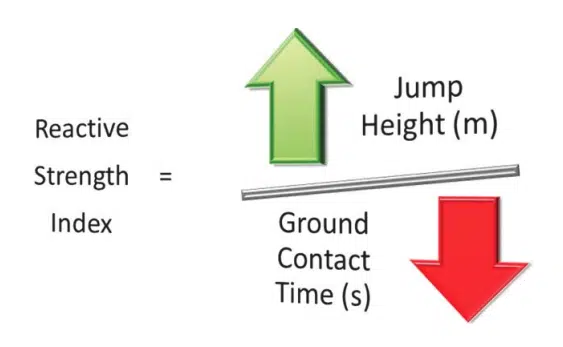
Figure 2: Formula for calculating the RSI. Reactive strength index can be increased by increasing jump height, decreasing ground contact time, or both 4.
Reactive Strength Index And The Stretch-Shortening Cycle (SSC)
Reactive strength can be defined as the ability to quickly change from an eccentric motion into a concentric muscular contraction, which is related to the Stretch-Shortening Cycle (SSC) 1. The SSC is commonly described as a rapid cyclical muscle action whereby the muscle undergoes an eccentric contraction, followed by a transitional period prior to the concentric contraction5.
Reactive strength can be defined as the ability to quickly change from an eccentric motion into a concentric muscular contraction
The action of the SSC can be seen as a spring, during the eccentric phase, the active muscles (and non-contractile elements as well) stretch and absorb energy6–8. Some of this energy is temporarily stored and then reused during the concentric phase of the SSC8. As the amount of force applied increases (compression speed) in specialized tissues such as tendons, fascia and muscle itself, the resulting force manifestation, expressed in the concentric phase, increases as well9,10. However, for the elastic energy to be used optimally, a rapid transition between the eccentric and concentric phases is required. Therefore, a jump which incorporates a rapid SSC will often allow an athlete to jump higher or farther than a jump from a static position 9,10.
Representation of the SSC phases 11
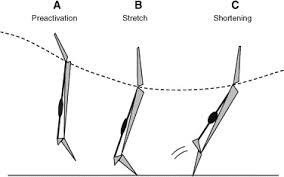
The SSC does not only occur during jumping or rebounding movements but also during any form of human movement when a involves a change of direction (walking, sprinting, throwing, twisting). However, massive differences exist at the speed at which SSC occurs in different movements which have been shown to be a key variable affecting mechanical stress in a given action5. Consequently, the SSC has been separated into two categories based upon the duration of the SSC1. However, caution must be taken to not oversimplify this.
- Fast-SSC: <250 milliseconds
- Slow-SSC: >250 milliseconds
The neurophysiological mechanism behind the Stretch-Shortening Cycle (SSC) contribution includes: storage of elastic energy 9, active state8,12, muscle and non-contractile tissues length-tension characteristics13,14, unconscious nervous processes15–17, pre-activity tension18, and efficiency of motor coordination 8,12. But to simplify this a little bit, we are going to divide them into two categories:
- Changes in the mechanical properties of the muscle-tendon unit
- Neuromuscular Mechanisms
The SSC does not only occur during jumping or rebounding movements but also during any form of human movement when a involves a change of direction (walking, sprinting, throwing, twisting). However, massive differences exist at the speed at which SSC occurs in different movements which have been shown to be a key variable affecting mechanical stress in a given action5. Consequently, the SSC has been separated into two categories based upon the duration of the SSC1. However, caution must be taken to not oversimplify this.
- Fast-SSC: <250 milliseconds
- Slow-SSC: >250 milliseconds
The neurophysiological mechanism behind the Stretch-Shortening Cycle (SSC) contribution includes: storage of elastic energy 9, active state8,12, muscle and non-contractile tissues length-tension characteristics13,14, unconscious nervous processes15–17, pre-activity tension18, and efficiency of motor coordination 8,12. But to simplify this a little bit, we are going to divide them into two categories:
- Changes in the mechanical properties of the muscle-tendon unit
- Neuromuscular Mechanisms
Changes in the mechanical properties of the muscle-tendon unit
As we mentioned before, the muscle-tendon unit is responsible for absorbing, storing and realizing the elastic energy in a SSC motion. In fact, due to its elastic properties, the tendon is thought to be the most important site for this task 6,7. However, muscle tissue also plays a key role, the cytoskeleton of the sarcomere consists of filaments such as titin and meromyosin, elements that have elastic qualities as well 19–22. Basically, muscles must stiffen (contract) prior to making contact with the ground, which is commonly known as ‘muscular pre-activity’, and stay stiff during the whole eccentric and amortization phase in order to avoid the collapse of the joint or dissipating energy as heat and thus efficiently transmit forces into the tendon and non-contractile tissues generating the deformation of the structures and consequently the storage of the elastic energy that will be released during the concentric phase additionally to the propulsive force generated by contracting muscles 5,11,23,24.
Pre-Activity of the muscle It is considered a component of the movement coordination program in the CNS which purpose is to optimize muscle action at the start of damping contracting agonist muscles in an anticipatory fashion. It takes place from the moment that the myoelectric activity raises above basal levels until the moment of contact with the ground25.
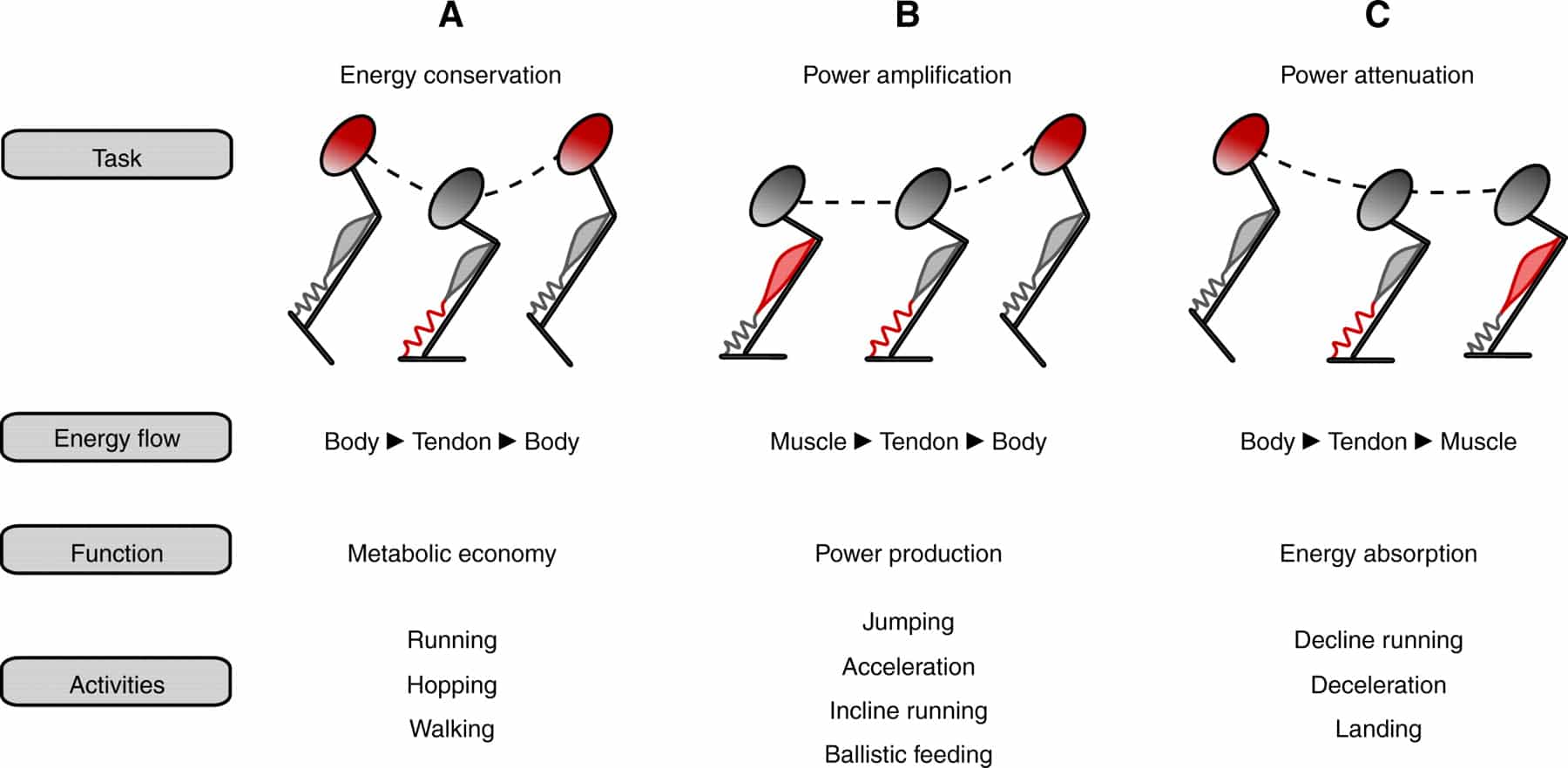
Figure 4: “A schematic illustrating how the directional flow of energy in muscle-tendon systems determines mechanical function. (A) Mechanical energy is conserved (i.e. muscle work is reduced) when elastic structures store and recover cyclic changes in the mechanical energy of the body or an appendage. (B) Tendons loaded directly by the work of muscle contraction can release that energy rapidly to the body. If the energy is released more rapidly than it is stored, muscle power can be amplified. (C) A rapid decline in the mechanical energy of the body or an appendage can be temporarily stored as elastic strain energy, followed by the release of this strain energy to do work on active muscles. This mechanism has the potential to reduce peak power input to muscles, thereby functioning as a power attenuator. In the figure, red indicates the flow of energy between active muscle contraction, tendon strain energy and body kinetic/potential energies.” Taken from 26
Neuromuscular Mechanisms
Sensory receptors in both muscle and tendons known as ‘proprioceptors’ (Muscle Spindles within the muscle and Golgi tendon organ (GTO) in the tendon) inform the SNC about changes in tension, length and joint angles and the rate at which this occurs 27,28.
During the eccentric phase of the SSC, the muscle is lengthened, the stretch signal is recognized by the muscle spindles which generates a reflex response increasing both motor unit recruitment and rate of coding to prevent over-lengthening and limit the possibility of injury15,29. Moreover, the excitatory response from the muscle spindle would lead to a greater concentric force output that would have been produced without it.
Furthermore, the GTO engage an opposite stretch-reflex response to the muscle spindles. The main function of the GTO is to inhibit the excitatory output of the muscle spindles during high load lengthening actions 27,28. Because of the inhibitory response of the GTO, it has been hypothesized that overstimulation of it would result in an inhibition of the excitatory response of the muscle spindle which may result in a performance loss during subsequent SSC activities5. However, it has been reported that inhibition of the inhibitory effect (disinhibition) of the GTO can increase muscular pre-activity and thus not negatively affecting SSC activities performance, in fact, disinhibition of the GTO is one of the desired adaptations generated by some training methods such as plyometric training or shock method30,31.
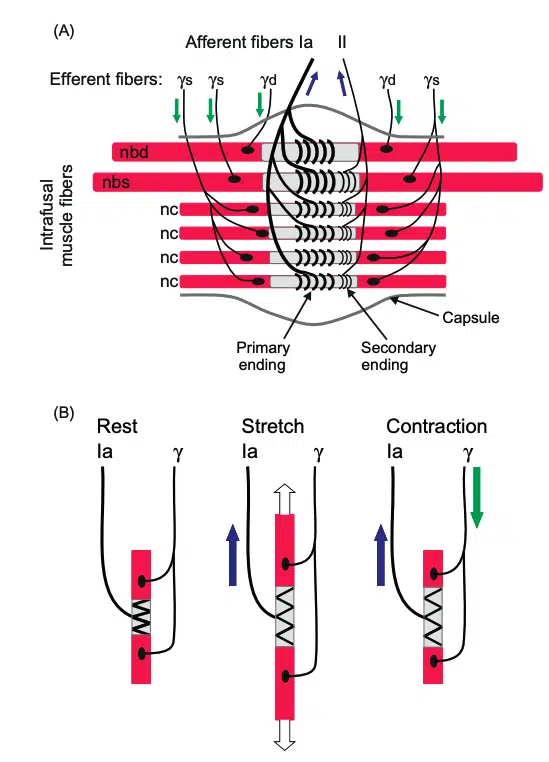
Figure 5: Muscle spindle. (A) Scheme of muscle spindle structure. (B) Influence of muscle stretch and the contraction of intrafusal muscle fibers on sensory endings in the central part of a spindle. Green arrows point in the direction of conduction of electrical potentials by axons of gamma-motoneurons, and blue arrows indicate type Ia and II sensory fibres. Intrafusal muscle fibers: nbd, a nuclear bag dynamic fibre; nbs, a nuclear bag static fiber; nc, nuclear chain fibers. Axons of gamma-motoneurons (γ): γs, a static motoneuron; γd, a dynamic motoneuron. Sensory fibers: Ia, type Ia; II, type II32.
RSI Testing
The original testing procedure for RSI as a way of measuring fast SSC ability proposed by Young 1 included an Incremental Drop Jump (DJ) procedure which consists of a DJ from a variety of drop heights (30, 45, 60cm) To impose various stretch loads on the leg extensors. A contact mat /computer system was used to record jump height and contact time1.
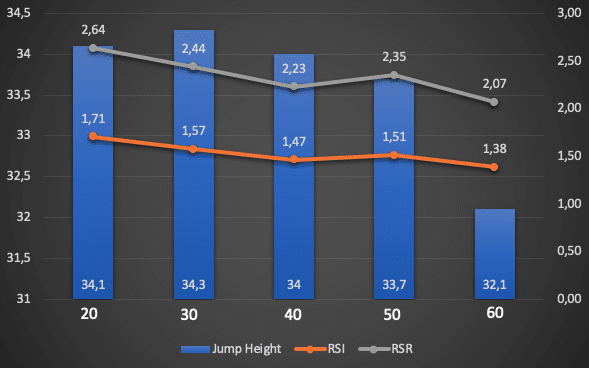
Figure 6. Example data from the Incremental DJ Test from a Rugby Player.
However, due to the advancements made in the sports science field and the improved technology available, other ways of RSI testing have been developed2.
Ebben & Petushek tested 49 subjects from National Collegiate Athletic Association (NCAA) Division-I, club, or recreational sports and participation in plyometrics as part of their annual training program. They used a battery of different jumps on a force plate to test reactive strength index which included:
- Squat Jumps
- Tuck Jump
- CMJ
- Loaded CMJ (Dumbbells with 30% 1RM)
- Single-Leg Jump
To calculate RSI the equation replaced ground contact time with time to takeoff in the. Thus, jump height was divided by time to takeoff which included the eccentric and concentric phases of the SSC and can be calculated for all vertical jumps2.
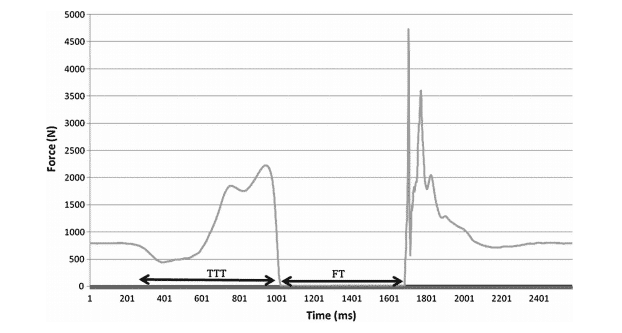
Figure 7. Force time record with variables used to calculate the reactive strength index modified including TTT = time to takeoff and FT = flight time 2
Moreover, Harper & Hobbs 33 based on the work of Lloyd et al., 2009 34 proposed another way of testing RSI which consisted of 10 consecutive jumps, also of maximal height and minimal ground contact time, where the final RSI is either the average of the 5 best or the average of the last 5 jumps (10/5 Test) 33.
Even though any kind of test can be valid and reliable in assessing RSI and thus, fast SSC ability, a deeper understanding of the testing procedures could be an advantage to get the most information out of them. For example, because of the characteristics of the 10/5 test, failing to maintain good postural control and accommodate for rapid corrections during the movement by the SNC could lead to discrepancies in both ground contact times and jump heights, both of which are integral components of the reactive strength index. Consequently, the inability to consistently coordinate movement during the ground contact phase could lead to greater variation in deformation of the ‘‘spring’’, and therefore greater variation in leg stiffness. The 10-5 testing protocol may be better for assessing stiffness because the drop height is constrained by the jump height of the previous repetition which gives further information that a single effort on the DJ test may not.
Additionally, most team sports athletes are heavily dependent on their ability to repeatedly produce efficient fast SSC actions. Considering this, testing reactive strength in a repeat effort task seems a logical approach.
Reactive Strength Index Chart
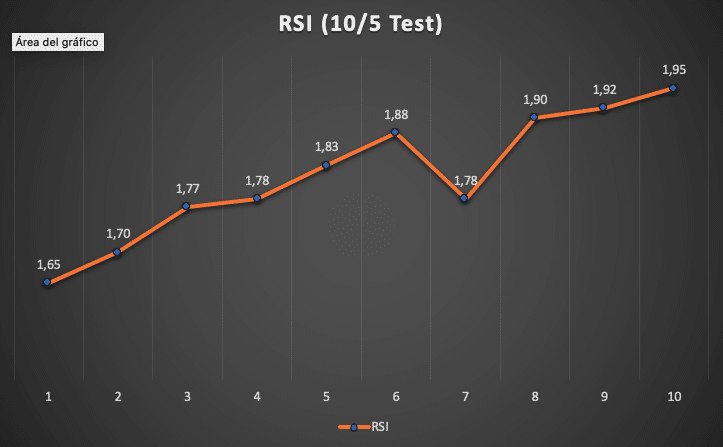
Figure 8. Example data from the 10/5 RSI Test from a Rugby Player.
Practical Application
There are 2 main reasons for selecting and implementing any RSI testing procedure:
- It provides information directly or indirectly related to a key performance indicator (KPI).
- It helps to individualize training programs and loading parameters.
Reactive strength index ability has been related to fast SSC action, which is involved in every relevant movement in most sports. In addition, RSI has been shown to have a strong relationship with both changes of direction speed and acceleration speed35agility 36 and also maximal strength37,38.
Moreover, RSI can be used to optimize the height for plyometric depth jumps from both a performance and injury-risk management perspective. Basically, during an incremental DJ test, if RSI is maintained or improved as height increases, and contact time is maintained below 250ms, it can be assumed that athletes reactive strength ability is enough for that depth. In contrast, a decrease in RSI and/or going beyond the 250ms contact time threshold may be indicative of a sub-optimal training stimulus or excessive stress on the muscle-tendon system.
RSI can be used to optimize the height for plyometric depth jumps from both a performance and injury-risk management perspective
In addition, contact time can be a powerful tool to monitor plyometric performance and asses fast SSC in real-time during sessions. It can also be used as a motivational tool to encourage athletes to give their best in every rep.
Finally, reactive strength index can be used as an athlete monitoring tool to assess neuromuscular fatigue and readiness throughout a training period.
References
- Young, W. Laboratory strength assessment of athletes. New Stud Athl 10, 89–96 (1995).
- Ebben, W. P. & Petushek, E. J. Using the Reactive Strength Index Modified to Evaluate Plyometric Performance. Journal of Strength and Conditioning Research 24, 1983–1987 (2010).
- García-López, J., Morante, J. C., Ogueta-Alday, A. & Rodríguez-Marroyo, J. A. The Type Of Mat (Contact vs. Photocell) Affects Vertical Jump Height Estimated From Flight Time. Journal of Strength and Conditioning Research 27, 1162–1167 (2013).
- Flanagan, E. P. & Comyns, T. M. The Use of Contact Time and the Reactive Strength Index to Optimize Fast Stretch-Shortening Cycle Training. Strength and Conditioning Journal 30, 32–38 (2008).
- Turner, A. N. & Jeffreys, I. The Stretch-Shortening Cycle: Proposed Mechanisms and Methods for Enhancement. Strength and Conditioning Journal 32, 87–99 (2010).
- Kubo, K., Kawakami, Y. & Fukunaga, T. Influence of elastic properties of tendon structures on jump performance in humans. Journal of Applied Physiology 87, 2090–2096 (1999).
- Kubo, K. In Vivo Elastic Properties of Human Tendon Structures in Lower Limb. Int. J. Sport Health Sci. 3, 143–151 (2005).
- BOBBERT, M. F., GERRITSEN, K. G. M., LITJENS, M. C. A. & VAN SOEST, A. J. Why is countermovement jump height greater than squat jump height? Medicine & Science in Sports & Exercise 28, 1402–1412 (1996).
- McBride, J. M., McCaulley, G. O. & Cormie, P. Influence of Preactivity and Eccentric Muscle Activity on Concentric Performance during Vertical Jumping. Journal of Strength and Conditioning Research 22, 750–757 (2008).
- Aura, O. & Viitasalo, J. T. Biomechanical Characteristics of Jumping. International Journal of Sport Biomechanics 5, 89–98 (1989).
- Komi, P. V. Stretch-shortening cycle: a powerful model to study normal and fatigued muscle. Journal of Biomechanics 33, 1197–1206 (2000).
- BOBBERT, M. F. & CASIUS, L. J. R. Is the Effect of a Countermovement on Jump Height due to Active State Development? Medicine & Science in Sports & Exercise 37, 440–446 (2005).
- Finni, T., Ikegaw, S., Lepola, V. & Komi, P. In vivo behavior of vastus lateralis muscle during dynamic performances. European Journal of Sport Science 1, 1–13 (2001).
- Ettema, G. J., Huijing, P. A. & de Haan, A. The potentiating effect of prestretch on the contractile performance of rat gastrocnemius medialis muscle during subsequent shortening and isometric contractions. Journal of Experimental Biology 165, 121–136 (1992).
- BOSCO, C., KOMI, P. V. & ITO, A. Prestretch potentiation of human skeletal muscle during ballistic movement. Acta Physiologica Scandinavica 111, 135–140 (1981)
- Van Ingen Schenau, G. J. Elastic energy and muscle potentiation, a continuing discussion. Human Movement Science 5, 115–121 (1986).
- Bosco, C. et al. Relationship between the efficiency of muscular work during jumping and the energetics of running. Europ. J. Appl. Physiol. 56, 138–143 (1987).
- Kyrölänen, H., Komi, P. V. & Kim, D. H. Effects of power training on neuromuscular performance and mechanical efficiency. Scandinavian Journal of Medicine & Science in Sports 1, 78–87 (2007).
- Connectin, an Elastic Protein of Muscle<subtitle>Comparative Biochemistry<xref ref-type=”fn” rid=”fn1″>1</xref></subtitle>. The Journal of Biochemistry (1977). doi:10.1093/oxfordjournals.jbchem.a131700
- Morgan, D. L., Proske, U. & Warren, D. Measurements of muscle stiffness and the mechanism of elastic storage of energy in hopping kangaroos. The Journal of Physiology 282, 253–261 (1978).
- Herzog, J., Leonard, T. R., Jinha, A. & Herzog, W. Titin (Visco-) Elasticity and IG Domain Unfolding and Refolding Kinetics. Biophysical Journal 104, 310a (2013).
- Herzog, W. The role of titin in eccentric muscle contraction. Journal of Experimental Biology 217, 2825–2833 (2014).
- Herzog, W. What Is the Series Elastic Component in Skeletal Muscle? Journal of Applied Biomechanics 13, 443–448 (1997).
- Nicol, C., Avela, J. & Komi, P. V. The Stretch-Shortening Cycle. Sports Medicine 36, 977–999 (2006).
- Gollhofer, A. & Kyröläinen, H. Neuromuscular Control of the Human Leg Extensor Muscles in Jump Exercises Under Various Stretch-Load Conditions. Int J Sports Med 12, 34–40 (1991).
- Roberts, T. J. & Azizi, E. Flexible mechanisms: the diverse roles of biological springs in vertebrate movement. Journal of Experimental Biology 214, 353–361 (2011).
- Komi, P. V. & Gollhofer, A. Stretch Reflexes Can Have an Important Role in Force Enhancement during SSC Exercise. Journal of Applied Biomechanics 13, 451–460 (1997).
- David Cooke, J. The role of stretch reflexes during active movements. Brain Research 181, 493–497 (1980).
- Butler, R. J., Crowell, H. P., III & Davis, I. M. Lower extremity stiffness: implications for performance and injury. Clinical Biomechanics 18, 511–517 (2003).
- Seyfadin, D. L. & Mahyadin, T. G. Effect Of Plyometric Training On Vertical Jump Performance And Neuromuscular Adaptation In Volleyball Player. huj 1, 495–506 (2016).
- Toumi, H. & Best, T. Muscle Plasticity Following Plyometric And Combined (Plyometric And Resistance) Training. Medicine & Science in Sports & Exercise 36, S169???s170 (2004).
- Celichowski, J. & Krutki, P. Chapter 4 – Motor Units and Muscle Receptors. in Muscle and Exercise Physiology (ed. A. Zoladz, J.) 51–91 (Academic Press, 2019). doi:https://doi.org/10.1016/B978-0-12-814593-7.00004-9
- Harper, D., Hobbs, S. & Moore, J. The ten to five repeated jump test. A new test for evaluation of reactive strength. in (2011).
- Lloyd, R. S., Oliver, J. L., Hughes, M. G. & Williams, C. A. Reliability and validity of field-based measures of leg stiffness and reactive strength index in youths. Journal of Sports Sciences 27, 1565–1573 (2009).
- Young, W. B., Miller, I. R. & Talpey, S. W. Physical Qualities Predict Change-of-Direction Speed but Not Defensive Agility in Australian Rules Football. Journal of Strength and Conditioning Research 29, 206–212 (2015).
- Young, W. B. & Murray, M. P. Reliability of a Field Test of Defending and Attacking Agility in Australian Football and Relationships to Reactive Strength. Journal of Strength and Conditioning Research 31, 509–516 (2017).
- Barr, M. J. & Nolte, V. W. The Importance of Maximal Leg Strength for Female Athletes When Performing Drop Jumps. Journal of Strength and Conditioning Research 28, 373–380 (2014).
- Dymond, C., Flanagan, E. & Turner, A. THE RELATIONSHIP BETWEEN MAXIMAL STRENGTH AND PLYOMETRIC ABILITY IN RUGBY PLAYERS. in (2011)

